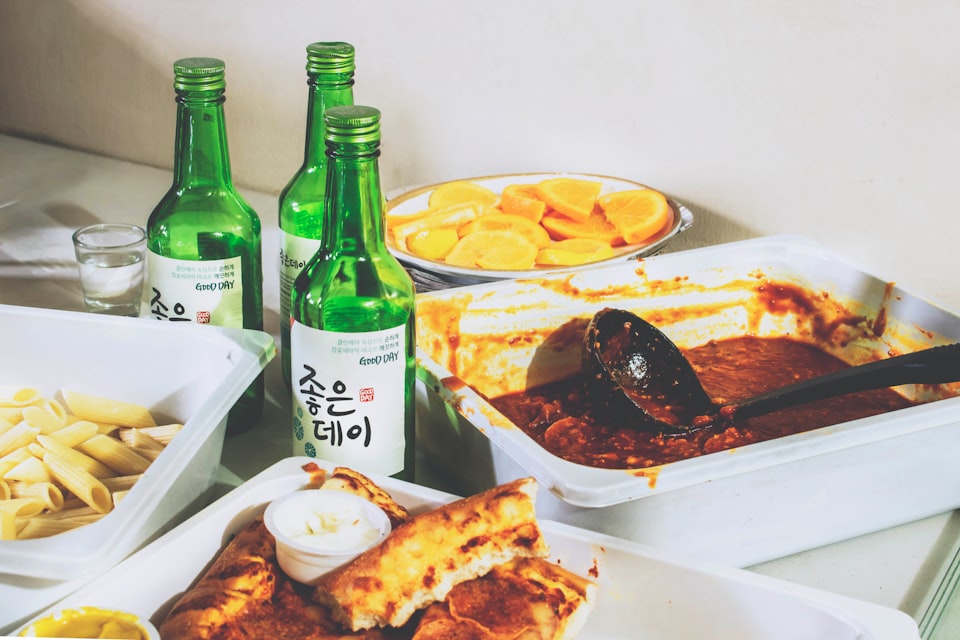Watch any one of the Korean dramas that seems to be blowing up on Netflix at any given point of time and you’ll be bound to notice at least one scene with a green-tinted bottle of liquor artfully placed beside a celebrity. Thanks in part to the budgetary firepower of soju companies’ marketing departments, it’s easy to guess from just one glance at that green bottle that the liquid inside is soju.
You may have wondered how the green bottle became so synonymous with the soju category. While South Korea is home to dozens of different soju brands – including the likes of HiteJinro’s Chamisul and Lotte’s Chum Churum – somehow many of the major brands still seem to bottle their product in the exact same 360ml green bottle of similar size and proportions.
In 1994, however, in a game-changing act of marketing, Doosan Beverage (which was later acquired by Lotte Chilsung) started to sell the very first green bottled soju. The brand opted for green because of the colour’s association with health and vitality. Some savvy marketers at Doosan felt that this characteristic of green would best convey their soju’s clean and neutral taste to consumers.
As more soju brands began bottling their soju in green tinted bottles, they realised that there could be other cost-saving benefits to be harnessed from this. The producers thought that if they were to standardise the green bottles they were using, any one soju bottle could be recycled and reused across the various producers.
A voluntary agreement was made between many of the major soju producers and the Korean Ministry of Environment. Brands would all produce their soju in the same green bottles, and these bottles could be brought to any of the brand’s recycling centres or breweries to be reused. Having standardised bottles saved tons of time and money when it came to sorting.
This eco-friendly initiative was so successful that by 2018, government statistics showed that around 97% of soju bottles in South Korea was regularly recycled.
All was well and good with the green bottle pact. Until it wasn’t.
In April of 2019, soju giant Hite Jinro decided to launch a new soju brand called “Jinro is Back”, which was inspired by older soju brands during earlier times. This wouldn’t have caused such controversy if not for the fact that the new brand was sold in a cool blue bottle, with a rounder, plumper shape – departing from the standardised green bottles that other producers and consumers alike had gotten used to.
Original article by @lotusroot518. Updated on April 29, 2023. Why Is Soju Always In Green Bottles? The Backstory Behind the Liquor’s Green Glow. https://88bamboo.co/blogs/features/why-is-soju-always-in-green-bottles-the-backstory-behind-the-liquor-s-green-glow
While binge-watching your favorite K-dramas on Netflix, have you ever noticed why soju bottles are the same? Those 375 ml green bottles are more than just a branding choice – they represent a fascinating case study in sustainable packaging, economics, and industry dynamics, with a recycling rate of nearly 98%. But as the industry evolves, change may be on the horizon.
A Quick Background
The era of green bottles dawned in the mid-90s when Doosan introduced them to the market. Soon, other brands followed suit, recognizing the cost-saving benefits of standardized packaging. Remarkably, this shift wasn’t driven by regulations or laws but rather by economic incentives. However, the status quo was disrupted in April 2019 with the introduction of non-standard bottles by Jinro, aiming to boost market share and revenue.
Tension Points
- Market Share vs. Cost Control: In a mature market like soju, balancing market share gains with cost controls is crucial. Standardized packaging offers efficiency, but differentiation drives market growth. Finding the right balance is key.
- Government vs. Industry: With two companies dominating 80% of the market, industry cooperation on standard bottles was feasible and cost-effective. However, when cooperation falters, regulatory intervention may be necessary to maintain sustainability goals.
- Reuse vs. Recycle: Both reuse and recycling are sustainable practices, but the introduction of non-standard bottles may shift the balance. While non-standard bottles can still be recycled, the energy and time required may increase production costs.
Producers and the public sector brokered a hybrid solution to address these chal. Non-standard bottles are exchanged within the network, with a fee levied if exchange isn’t feasible. This approach aims to maintain sustainability goals while accommodating industry evolution.
As the industry navigates these changes, the future of soju packaging remains uncertain. Will reuse rates decline and recycling rates increase? Time will tell. In a broader context, the soju industry's experience offers valuable lessons for sustainable packaging practices across various sectors.
At Pollen, we often encounter a lack of conformity in packaging standards across industries. While differentiation is essential, it's important to balance it with sustainability goals. Standardized packaging norms can streamline recovery processes and promote more sustainable outcomes. As we move forward, industry collaboration and regulatory support will be crucial in achieving these objectives.
In conclusion, South Korea's soju bottles serve as the challenges and opportunities in sustainable packaging. By learning from this experience, we can pave the way for a more environmentally conscious future.
If you’re interested in learning more about Pollen’s approach to sustainable liquidation, feel free to explore our website at https://www.pollen.tech/.
This article is featuring Michael Schindler’s observations related to dynamic pricing and sustainability. Michael Schindler (LinkedIn) is Pollen's Chief Operating Officer and has a long track record of leading teams, uncovering insights, and driving business results across US, EMEA, and APAC. At Pollen, he’s leading our business teams as well as directing overall company strategy and operations.

